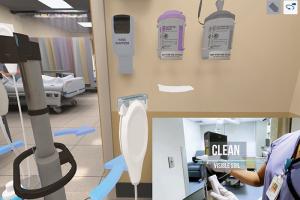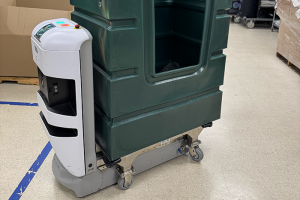ES managers face succession planning challenges
The following professionals from AHE’s advisory council contributed to this sidebar:
Marci Butts, CHESP, director of ancillary and support services, The Jewish Hospital
Eddie Gomez, director of plant operations, HealthSouth Northern Kentucky Rehabilitation Hospital
April Huggler, T-CHEST, quality assurance and training manager, Oregon Health & Science University,
Rock Jensen, senior consultant, Soriant Healthcare
Nazar Masry, CHESP, T-CHEST, vice president of health care and laundry operations, Job Options Inc.
James Odom Jr., CHESP, T-CHEST, assistant director II of environmental services at Crothall Healthcare–Compass Group One
Georgie Shockey, principal of Ruck-Shockey Associates Inc.
Facing almost the same set of circumstances as facilities management, many environmental services (ES) departments are also behind the curve in terms of succession planning, according to members of the Association for the Healthcare Environment (AHE) Advisory Council, a team of ES leaders serving as volunteers to assist AHE staff.
Also in this article |
| Staying ahead of the staffing curve |
| Factoring women into succession planning |
| 'Soft skills' critical for new generation of leaders |
|
|
Baby boomers are retiring in large numbers, and qualified candidates often aren’t being groomed to step into these positions. Filling leadership positions has become more challenging as the role has evolved and become more complex. Along with cleaning, infection control and technical skills, ES managers oversee large, diverse groups of employees and work closely with patients.
For that reason, managers need to make a strong case to ensure that qualified leaders and front-line professionals are available to step into those roles from a position of strength, leaders say. To excel at succession planning, leaders must:
- Mentor and prepare management teams to be leaders and front-line teams to focus on excellence in services, technical skills and core knowledge.
- Provide a career ladder with corresponding educational opportunities to develop employees.
- Establish charge leads, senior floor leads, supervisors and managers to facilitate that career ladder.
- Work closely with the human resource professionals in your organization to ensure that the right people are selected for open positions.
- Senior leaders should encourage current and upcoming leaders to constantly improve their skills and knowledge through training, education and networking as well as earning certificates, certifications and fellowships.
The wide range of tools (i.e., webinars, publications, conferences, certification courses and online classes) available through AHE aid career advancement in every area of ES, leaders say. ν
Beth Burmahl is a freelance health care writer and former associate editor of Health Facilities Management. She is based in Lisle, Ill.



